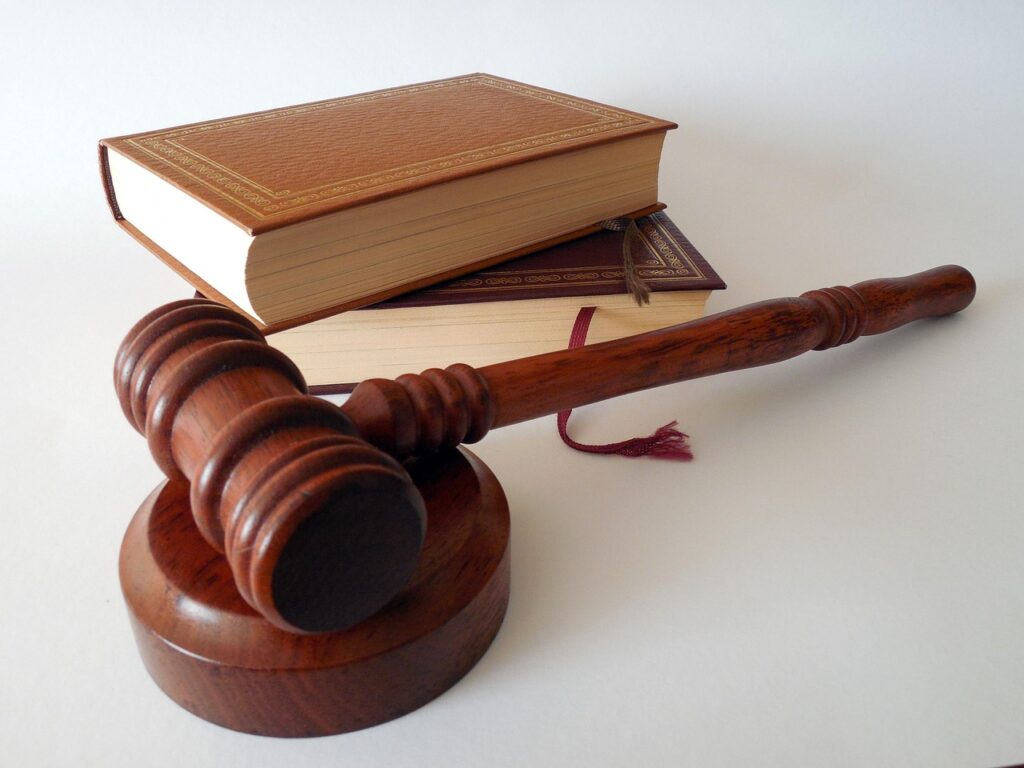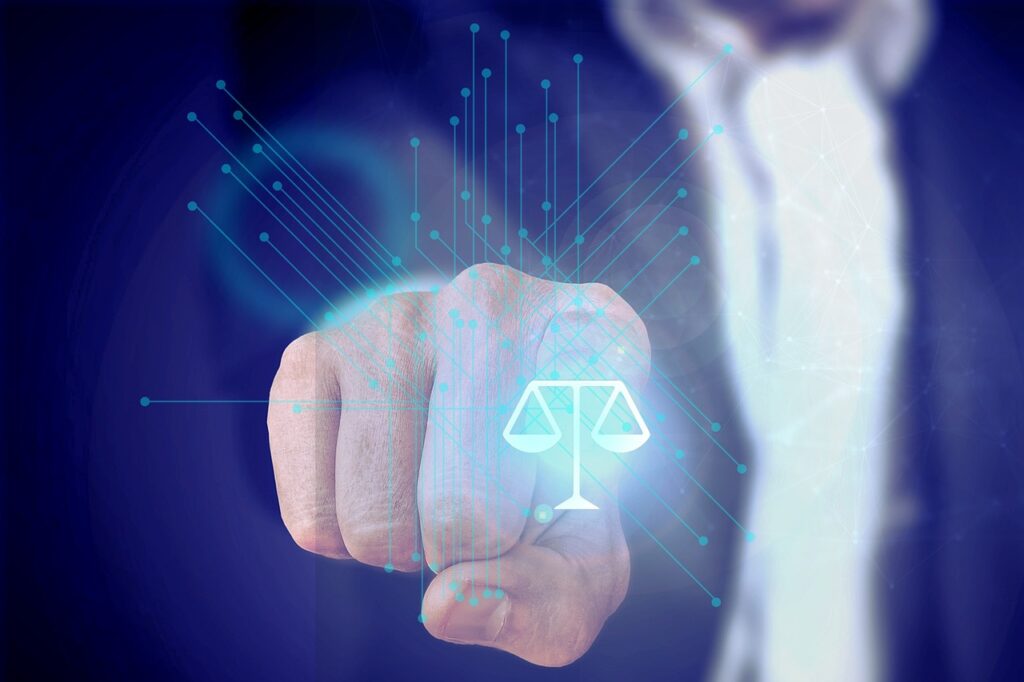Published on: 12th November 2025
Authored by: Akanksha Prajapati
Shambhunath Institute of Law
Court: Supreme Court of India
Bench: Chief Justice Dipak Misra, Justice A.M. Khanwilkar, Justice Rohinton Nariman, Justice D.Y. Chandrachud, Justice Indu Malhotra
Date of the Judgment: September 28, 2018
Relevant Provision / Statutes:
- Article 14 of the Constitution
- Article 15 of the Constitution
- Article 17 of the Constitution
- Article 25 of the Constitution
- Article 26(b) of the Constitution
- Article 32 of the Constitution
- Rule 3(b) of Kerala Hindu Places of Public Worship (Authorisation of Entry) Rules, 1965
- Section 4 of Kerala Hindu Places of Public Worship (Authorisation of Entry) Act, 1965
Brief Facts
The Sabarimala Temple case is one of the most significant legal battles for women’s rights in recent times, challenging old-age religious customs. The temple is situated at an altitude of about 3000 feet above sea level in the Pathanamthitta district of Kerala. The temple is known for its unique religious practices – devotees are required to undergo a 41-day period of penance during which they abstain from worldly pleasures before visiting the temple. The deity at Sabarimala is in the form of Yogi or Bramchari, according to the Thanthri of the temple. It is traditionally believed that since celibacy is a core principle of the temple, the presence of women between the ages of 10 to 50, who are of menstruating age, could disturb the austerity and discipline observed by devotees. As a result, this age group has been prohibited from entering the temple, based on the notion that their presence may affect the sanctity of the space.
The ban on women’s entry into the Sabarimala temple was first brought before the Kerala High Court in 1991. In the case of S. Mahendran v. The Secretary, Travancore Devaswom Board, Thiruvananthapuram and Ors. [1]The court ruled that the ban was justified, stating that it was a long-standing religious custom and it did not violate women’s right to equality of freedom of worship.
In 2006, the Indian Young Lawyers Association filed a PIL petition before the SC challenging the restriction on constitutional grounds.[2]. They claimed that this restriction violated the right to equality and the freedom of religion under Articles 14 and 25. Furthermore, the Sabarimala custom of restricting the entry of women was protected by Rule 3(b) of Kerala Hindu Places of Public Worship (Authorisation of Entry) Rules, 1965 (Public Worship rules). This rule allowed certain groups to be excluded from worship if such exclusions were based on tradition. However, this was in direct conflict with Section 4 of the parent act, namely the Hindu Places of Public Worship (Authorisation of Entry) Act, 1965, which prohibited any form of discrimination against Hindus based on case, section, or class.
Moreover, the Supreme Court declared that the ban on women is unconstitutional in the Sabarimala case. This presents an ironic contradiction, as the rule formulated under the legislation, Kerala Hindu Places of Public Worship (Authorisation of Entry) Rules, 1965, designed to eliminate discrimination and promote temple entry, was used to justify exclusion.
Issues
The following questions arise for consideration:
- Whether the exclusionary practice, which is based upon a biological factor exclusive to the female gender, amounts to “discrimination” and thereby violates the very core of Article 14,15, and 17, and is not protected by morality as used in Article 24 and 26 of the constitution?
- Whether the practice of excluding such women constitutes an “essential religious practice” under Article 25 and whether a religious institution can assert a claim in that regard under the umbrella of the right to manage its affairs in matters of religion?
- Whether Ayyappa Temple has a denominational character and, if so, the part of a “religious denomination” managed by a statutory board and financed under Article 290-A of the Constitution of India out of the Consolidated Fund of Kerala and Tamil Nadu to indulge in such practices violating constitutional principles/morality embedded in Article 14, 15, 39(a) and 51-A(e)?
- Whether Rule 3 of the Kerala Hindu Places of Public Worship (Authorisation of Entry) Rules, 1965 permits a “religious denomination” to ban entry of women between the ages of 1 to 50 years? And if so, would it not play foul of Article 14 and 15(3) of the Constitution by restricting the entry of women on the grounds of sex?[3]
Arguments by Petitioners
The petitioners argued that the prevention of women of menstruating age (between 10-50) from entering the temple was unfair and violated Articles 14 and 25 of the Constitution. They emphasized that mensuration is a natural process and should not be considered impure. They challenged a provision in Kerala Hindu Places of Public Worship (Authorisation of Entry) Act, 1965, which supports restrictions on women’s entry into the temple, is unconstitutional as it violates Articles 14, 15, 25, and 26 of the Indian Constitution.
Article 25 grants every individual the right to practice religion, which includes religious rituals and worship. The right to freedom of religion extends not only to the holding of their beliefs but also to the act of expressing or practising their beliefs, and the right to religion is a vital part of the fundamental right to life and personal liberty guaranteed under Article 21 of the Constitution.[4]
Additionally, disclosure of menstrual status was a violation of women’s right to privacy; they relied on the judgment in KS. Puttaswamy and Anr. v. UOI[5], which upheld privacy as a fundamental right. Excluding menstruating women from the temple entry is discriminatory and affects their dignity.
Arguments by Respondents
The respondent argued that the customs and usage of women (aged between 10-50 years not being allowed to enter the temple has its traces in the basic tenets of the establishment of the temple, of Lord Ayyappa, and his worship. They argued that Rule 3(b) of the Kerala Hindu Places of Public Worship (Authorisation of Entry) Rules, 1965 did not deny entry of all women as a class but merely of women of specific age groups, for a specific objective. The rules are framed in consonance with Article 25(2) of the Constitution.
The deity of Sabarimala is in the form of Naishtika Brahmachari, and that is also a reason why young women are not allowed inside the temple, to prevent even the slightest deviation from the celibacy and austerity observed by the deity.[6]
Judgment
The Supreme Court in a 4:1 verdict held that the restriction upon the entry of women into the Sabarimala temple was unconstitutional the practice violated the fundamental right to equality, liberty, and freedom of religion, Article 14, 15, 21, and 25 and struck down the rules 3(b) of the Kerala Hindu Places of Public Worship (Authorisation of Entry) Rules, 1965
However, Justice Indu Malhotra in her dissenting opinion argued that it is the constitutional duty of the court to harmonise the rights of all persons, religious denominations or sections thereof, to practice their religion according to their beliefs and practices. The right to practice one’s religion is a fundamental right guaranteed by Part III of the Constitution. Religious practices are protected under Articles 25 and 26(b). Courts normally do not delve into issues of religious practices, especially in the absence of an aggrieved person from a particular religion, faith, or section.
Ratio Decidendi
Exclusion of women from entering the temple is unconstitutional as it is violative of the fundamental rights of women under Articles 14,15, 17, 25, and 26 of the Constitution.[7] The Supreme Court ruled that every individual has the fundamental right to freely practice their religion, emphasizing that religion is a means of expressing one’s faith. The ruling marked a significant milestone in advancing gender equality and represented a major shift in Indian legal history. The court further emphasized that women’s dignity is protected under Articles 15 and 21, and their equal participation in society is necessary for fairness and progress. It also clarified that public order, morality, and health cannot be misused as grounds to restrict individual freedoms or religious rights.
Social and Political Impact
The Sabarimala verdict sparked widespread public protest, particularly from religious groups and traditionalists who perceived it as an interference in their faith. Devotees and organisations opposed the ruling, leading to political tensions and mass demonstrations. The Judgment also had a significant impact on women’s rights movements, empowering activists advocating for gender equality in religious spaces. However, it posed challenges for religious institutions, forcing them to reconcile constitutional values with traditional beliefs. The ruling ignited a national debate on the balance between religious autonomy and gender justice, influencing future legal discourse on similar issues.
Conclusion
The Sabarimala case serves as a crucial study in the continuing discussion regarding Indian constitutional rights and religious customs. The conflict between individual rights and collective customary practices is a thorny issue. In this case, the individual rights of women were given precedence over the customary practices of the devotees. Traditions have always been an essential part of our society. There are several landmark decisions regarding gender equality involving matters of religion by the Indian Judiciary, which ensures that religious practices do not infringe upon constitutional rights and societal values. Allowing women to access the temple, decriminalizing adultery[8] and finding that triple talaq is unconstitutional.[9]These are among the historic decisions that provide feminism and progressives alike with a sense of achievement and forward progression. [10]
The Constitution protects the freedom of conscience and freely profess, protect and propagate religion. Equal participation of women in exercising their rights to religious freedom is a recognition of this right. The dignity of women cannot be disassociated from exercising religious freedom. The Supreme Court, through its verdict of removing the ban on women from entering the Sabarimala temple again, established the supremacy of the Constitution.[11] In conclusion, it is imperative that the judiciary continues to play a pivotal role in safeguarding the rights of all individuals while also respecting and preserving cherished customs and traditions that hold immense spiritual significance for countless individuals. By doing so, we can hope to achieve a society that is harmonious, just, and equitable for all.
[1] AIR 1993, Kerala 42
[2] Sabarimala Temple Entry , Supreme Court Observer, https://www.scobserver.in/cases/indian-young-lawyers-association-v-state-of-kerala-sabarimala-temple-entry-background/
[3]Prachi Bharadwaj, ‘Ban on entry of women in Sabarimala Temple: Matter Referred to constitution bench’, SCC Online, https://www.scconline.com/blog/post/2017/10/13/ban-entry-women-sabrimala-temple-matter-referred-constitution-bench/
[4] Bijoe Emmanual v. State of Kerala, (1986) 3 SCC 615.
[5] (2019) 1 SCC 1
[6] https://www.manupatracademy.com/legalpost/manu-sc-1094-2018
[7] Anusha Maurya* & Astha Bhatt, CRITICAL ANALYSIS OF DISSENTING OPINION IN SABARIMALA TEMPLE CASE: WAS THE DISSENTING OPINION OF JUSTICE MALHOTRA IN CONSONANCE WITH THE CONSTITUTION? (May, 2019), https://thelawbrigade.com/wp-content/uploads/2019/05/Anusha-Astha.pdf
[8] Joseph Shine v. Union of India, (2019) 3 SCC 39
[9] Shayara Bano v. Union of India, (2017) 9 SCC 1.
[10] Ratna kapur, ‘GENDER AND THE “FAITH” IN LAW: EQUALITY, SECULARISM, AND THE RISE OF THE HINDU NATION’, (December, 9, 2020), https://www.cambridge.org/core/journals/journal-of-law-and-religion/article/gender-and-the-faith-in-law-equality-secularism-and-the-rise-of-the-hindu-
nation/C5E07F5372F318B2A95D6C6B89CB2993
[11] https://blog.ipleaders.in/case-comment-sabarimala-case/




